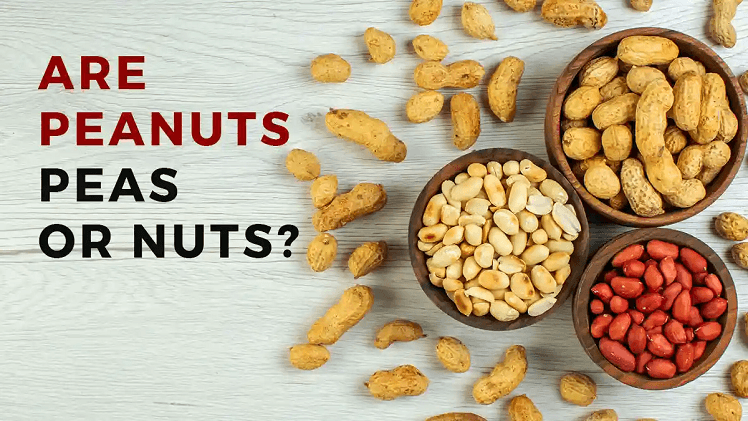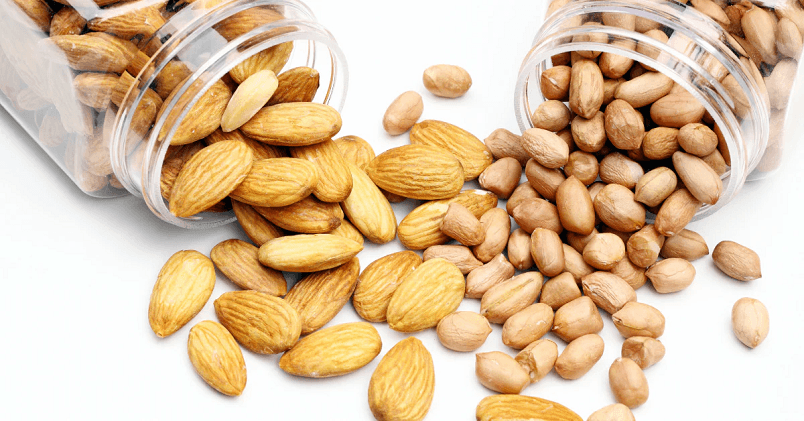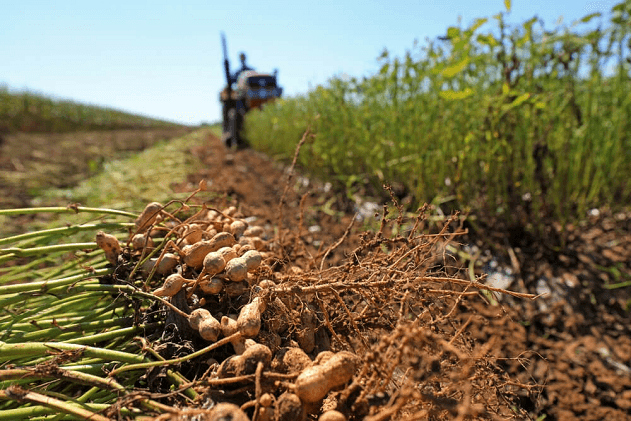Are Peanuts Peas or Nuts? Unveiling the Truth About Peanuts

Introduction: The Peanut Dilemma
Are peanuts peas or nuts? are one of the most widely consumed snacks around the world. From being served as a quick snack to being a key ingredient in various dishes, peanuts have earned their place in kitchens globally. However, kaku press there’s often confusion regarding the classification of peanuts. Are they technically peas or nuts? In this article, we will explore the scientific classification of Are peanuts peas or nuts? their botanical background, and clarify whether they are truly nuts, peas, or something else entirely.
What Exactly Are Peanuts?
Peanuts, known scientifically as Arachis hypogaea, are legumes that belong to the Fabaceae family. Unlike most other nuts, which grow on trees, peanuts are actually underground seeds that grow within pods. These seeds, which are commonly referred to as peanuts, have an edible kernel inside and are widely consumed in their raw or roasted form.
Peanuts have a high nutritional value and are rich in protein, healthy fats, vitamins, and minerals. Despite being commonly referred to as “nuts,” they are not classified as such scientifically.
The Botanical Classification of Peanuts
Understanding whether Are peanuts peas or nuts? are nuts or peas requires a look at their botanical classification. The scientific classification of peanuts places them in the legume family. Legumes are plants that bear seeds inside pods, and they include beans, lentils, peas, and chickpeas, among others.
Botanical Hierarchy of Peanuts:
- Kingdom: Plantae
- Order: Fabales
- Family: Fabaceae
- Genus: Arachis
- Species: A. hypogaea
This classification shows that peanuts belong to the same family as peas and beans, which are all part of the Fabaceae family. However, unlike true nuts, peanuts develop in pods beneath the ground, which is a defining characteristic of legumes.
Peanuts vs. Nuts: Understanding the Difference

The confusion about peanuts stems from the fact that they share many culinary uses with true nuts, such as almonds, walnuts, and cashews. However, from a botanical perspective, Are peanuts peas or nuts? are distinctly different from these nuts.
Key Differences Between Peanuts and True Nuts:
| Feature | Peanuts | True Nuts |
|---|---|---|
| Botanical Family | Legume (Fabaceae family) | Tree Nuts (e.g., walnut, almond, hazelnut) |
| Growth Location | Underground (pods) | Above ground on trees |
| Seed Encapsulation | Seeds inside soft pods | Seeds inside hard, woody shells |
| Plant Type | Herbaceous plant (grows on the ground) | Woody trees |
As we can see, peanuts grow beneath the soil, whereas true nuts grow on trees. Additionally, true nuts, like walnuts and chestnuts, are encased in hard, woody shells, which is not the case with peanuts.
Peanuts vs. Peas: How Are They Different?
The comparison between peanuts and peas is also common due to their similarities in size and shape. Both are members of the Fabaceae family, but there are distinct differences between them.
Peanuts and Peas: Key Differences
| Feature | Peanuts | Peas |
|---|---|---|
| Growth Environment | Grows underground inside pods | Grows above ground inside pods |
| Shape and Appearance | Oval-shaped, with a slightly rough texture | Round-shaped, smooth texture |
| Nutritional Composition | High in fats, protein, and healthy oils | High in carbohydrates and protein |
| Common Usage | Snacking, peanut butter, oil | Cooking, soups, salads, and stews |
While both Are peanuts peas or nuts? and peas are legumes, peanuts are richer in fats and are often used in snacks like peanut butter or roasted peanuts. Peas, on the other hand, are typically used in savory dishes and contain more carbohydrates than peanuts.
Nutritional Benefits of Peanuts
Peanuts are a powerhouse of nutrition and offer various health benefits. They are an excellent source of protein, healthy fats, vitamins, and minerals, making them a healthy addition to your diet.
Key Nutritional Benefits of Peanuts:
- Protein: Peanuts are an excellent source of plant-based protein, making them an ideal choice for vegetarians and vegans.
- Healthy Fats: They are rich in monounsaturated and polyunsaturated fats, which are good for heart health.
- Vitamins and Minerals: Peanuts contain vitamins like vitamin E, niacin, and folate, as well as minerals such as magnesium, phosphorus, and potassium.
- Antioxidants: Peanuts are packed with antioxidants, which help protect the body from oxidative stress and inflammation.
Peanuts are often used in weight management diets due to their ability to help with satiety. They can reduce hunger cravings and help you feel full for longer periods.
Common Misconceptions About Peanuts
There are several misconceptions about Are peanuts peas or nuts? which often lead to confusion about their classification:
- Peanuts are nuts: Despite their common name, peanuts are not technically nuts. They are legumes, more closely related to beans, peas, and lentils.
- Peanuts grow on trees: Unlike true nuts, peanuts grow underground. The peanut plant flowers above ground, but the pods develop and mature below the soil.
- Peanuts are unhealthy: While peanuts are high in fats, the fats they contain are primarily healthy monounsaturated and polyunsaturated fats. In moderation, peanuts are very nutritious.
The Growing and Harvesting Process of Peanuts

The peanut plant has a unique growth cycle. It begins by flowering above ground and then the flowers bend down to touch the soil, where the peanuts develop underground.
Key Stages in the Growing Process:
- Planting: Peanuts are typically planted in sandy soil during warm seasons.
- Flowering: The plant blooms and produces small, yellow flowers.
- Pod Formation: After pollination, the flowers elongate and burrow into the soil, where the pods begin to develop.
- Harvesting: Once the pods mature, they are dug up from the soil and harvested, revealing the peanuts inside.
Peanut Uses Across the World
Peanuts are used globally in various forms. Some common uses of peanuts include:
- Peanut Butter: A popular spread made by grinding roasted peanuts into a smooth or chunky paste.
- Roasted Peanuts: A common snack, often salted or flavored.
- Peanut Oil: Used for cooking due to its high smoking point and neutral flavor.
- Peanut Flour: Used in gluten-free baking or as a protein supplement.
In different cultures, peanuts are also used in savory dishes, curries, and snacks.
FAQs About Peanuts
Q1: Are peanuts good for you?
Yes, peanuts are a good source of protein, healthy fats, and essential vitamins and minerals. They are beneficial for heart health, weight management, and overall well-being when consumed in moderation.
Q2: Are peanuts suitable for people with nut allergies?
No, peanuts are not suitable for individuals with nut allergies, as they may cause allergic reactions. People with tree nut allergies should avoid peanuts.
Q3: Why are peanuts called groundnuts?
Peanuts are called “groundnuts” because they grow underground. Unlike tree nuts, which grow on trees, peanuts develop beneath the soil in pods.
Q4: Can peanuts be eaten raw?
Yes, raw peanuts can be consumed, but they are often roasted for better taste and texture. Roasting also enhances the flavor and makes peanuts easier to digest.
Q5: Are peanuts good for weight loss?
Yes, peanuts can aid in weight loss. They contain protein and healthy fats, which help curb hunger and provide satiety.
Conclusion: Understanding the Nature of Peanuts
To summarize, peanuts are neither true nuts nor peas, but rather a unique member of the legume family. Scientifically, they are classified as legumes because they grow underground, unlike tree nuts that grow on trees. Despite their culinary usage, they belong to the Fabaceae family, which also includes peas, beans, and lentils.
Peanuts are rich in healthy fats, protein, and other essential nutrients, making them a great addition to a balanced diet. However, it’s important to differentiate between culinary and botanical classifications to understand peanuts better.
Are peanuts peas or nuts? remain one of the most popular snacks worldwide and continue to be a vital ingredient in many dishes. Their versatility and nutritional profile make them a delicious and healthy choice for people of all ages.



